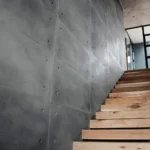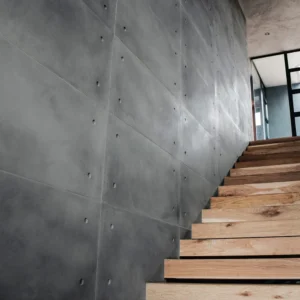As South Africa continues to urbanize rapidly, the demand for sustainable construction practices is becoming more pressing. Green building materials South Africa are emerging as a vital component in reducing the environmental footprint of the construction sector, which traditionally consumes significant natural resources and generates large amounts of waste. Incorporating eco-friendly materials not only supports environmental conservation but also offers numerous economic and social benefits for the country. This article explores the advantages of green building materials in South Africa and outlines the best practices to implement them effectively.
Understanding Green Building Materials in South Africa
Green building materials refer to products that are environmentally responsible throughout their lifecycle — from extraction, manufacturing, transportation, use, and disposal. These materials are designed to minimize energy consumption, reduce waste, improve indoor air quality, and promote the use of renewable resources. In the South African context, green building materials emphasize local availability and relevance to the country’s unique climate, economy, and environmental challenges.
South Africa faces significant issues such as water scarcity, high energy demand, and increasing pollution. Hence, green building materials tailored for this environment are crucial to sustainable development. Examples include recycled steel, fly ash bricks, bamboo, locally sourced timber, and natural insulation materials. These materials help buildings become more energy-efficient and environmentally friendly.
Benefits of Using Green Building Materials South Africa
Environmental Benefits
One of the most significant advantages of green building materials is their positive impact on the environment. The construction industry contributes heavily to carbon emissions and waste generation in South Africa. By choosing sustainable materials, builders can reduce the carbon footprint of their projects considerably. For example, materials like recycled concrete and fly ash bricks use industrial by-products, thus diverting waste from landfills and reducing the need for new raw materials.
Green materials also contribute to better water management. Certain building materials can reduce water consumption through permeable pavements or rainwater harvesting systems integrated within construction designs. This is particularly important in South Africa, where water scarcity is a critical issue.
Economic Advantages
Although the initial cost of green building materials may sometimes be higher, the long-term savings are significant. Energy-efficient materials help reduce utility bills by improving insulation and reducing the need for heating and cooling systems. For instance, materials such as insulated concrete forms or reflective roofing can cut energy costs substantially over a building’s lifetime.
Additionally, the use of local materials reduces transportation costs and supports the local economy by creating jobs in mining, manufacturing, and distribution. Investing in green materials also increases property value as buyers and tenants become more environmentally conscious.
Health and Social Benefits
Buildings constructed with green materials tend to have better indoor air quality due to the use of non-toxic and low-emission products. This reduces health risks such as respiratory problems and allergies, enhancing occupant comfort and well-being. In South Africa, where urban areas often suffer from pollution, this benefit is particularly important.
Socially, adopting green building materials encourages community involvement, especially when local resources and labor are used. It fosters a sense of responsibility toward sustainable living and raises awareness about environmental conservation among residents and developers alike.
Best Practices for Using Green Building Materials in South Africa
Selecting Locally Sourced and Sustainable Materials
To maximize the benefits of green building materials South Africa, it is essential to prioritize local sourcing. Locally produced materials not only reduce transportation emissions but also support South African industries and economies. Materials like timber from sustainably managed forests, natural stone, and clay bricks are excellent examples.
In addition, sourcing materials with environmental certifications or third-party verification ensures that the materials meet sustainability standards. Organizations such as the Green Building Council of South Africa (GBCSA) provide certifications that help developers identify and select sustainable products.
Integrating Energy Efficiency in Building Design
Green building materials work best when combined with energy-efficient design principles. For example, using high-performance insulation materials alongside passive solar design can drastically reduce energy consumption. Positioning windows and shading devices appropriately, using reflective roofing materials, and employing natural ventilation methods enhance the efficiency of green materials.
This holistic approach ensures that the materials contribute optimally to the building’s energy performance, helping to achieve green building certification and reduce operational costs.
Reusing and Recycling Materials
South Africa generates significant construction and demolition waste. Best practices include incorporating recycled materials such as reclaimed wood, recycled steel, or crushed concrete. Using these materials helps reduce landfill waste and lowers the demand for virgin resources.
Designing buildings with deconstruction in mind also facilitates future reuse of materials, further promoting sustainability. Encouraging contractors and architects to plan for material recovery can improve the circular economy within the construction sector.
Training and Awareness for Builders and Consumers
The successful adoption of green building materials requires knowledgeable builders, architects, and consumers. Providing training and workshops on the benefits, application techniques, and maintenance of sustainable materials can drive widespread acceptance.
In South Africa, various initiatives by government agencies, non-profits, and industry bodies aim to increase awareness about green building practices. Encouraging developers and homeowners to understand the long-term value of green materials supports broader sustainable development goals.
Utilizing Government Incentives and Policies
The South African government supports sustainable construction through policies and incentives. Builders and developers should take advantage of rebates, tax incentives, and grants related to energy-efficient building materials and renewable energy integration.
Compliance with national standards such as the National Building Regulations and the South African National Energy Development Institute (SANEDI) guidelines also ensures that construction projects align with sustainability targets.
Challenges and Future Outlook
Despite the many benefits and growing interest, green building materials South Africa face challenges such as high upfront costs, limited availability of certain materials, and resistance due to lack of awareness. However, technological advances and increasing environmental regulations are gradually overcoming these barriers.
As global and local focus on climate change intensifies, the South African construction industry is poised to embrace sustainable materials more broadly. Innovations in material science, such as bio-based composites and advanced insulation products, promise to enhance the availability and performance of green building materials in the future.
Conclusion
Green building materials South Africa are essential in addressing the environmental, economic, and social challenges facing the country’s construction sector. Their use supports reduced carbon emissions, energy and water savings, improved occupant health, and local economic development. By adopting best practices such as local sourcing, energy-efficient design, recycling, and training, South Africa can build a more sustainable future. Embracing these materials not only benefits the environment but also creates resilient, healthy, and cost-effective buildings that will stand the test of time.


